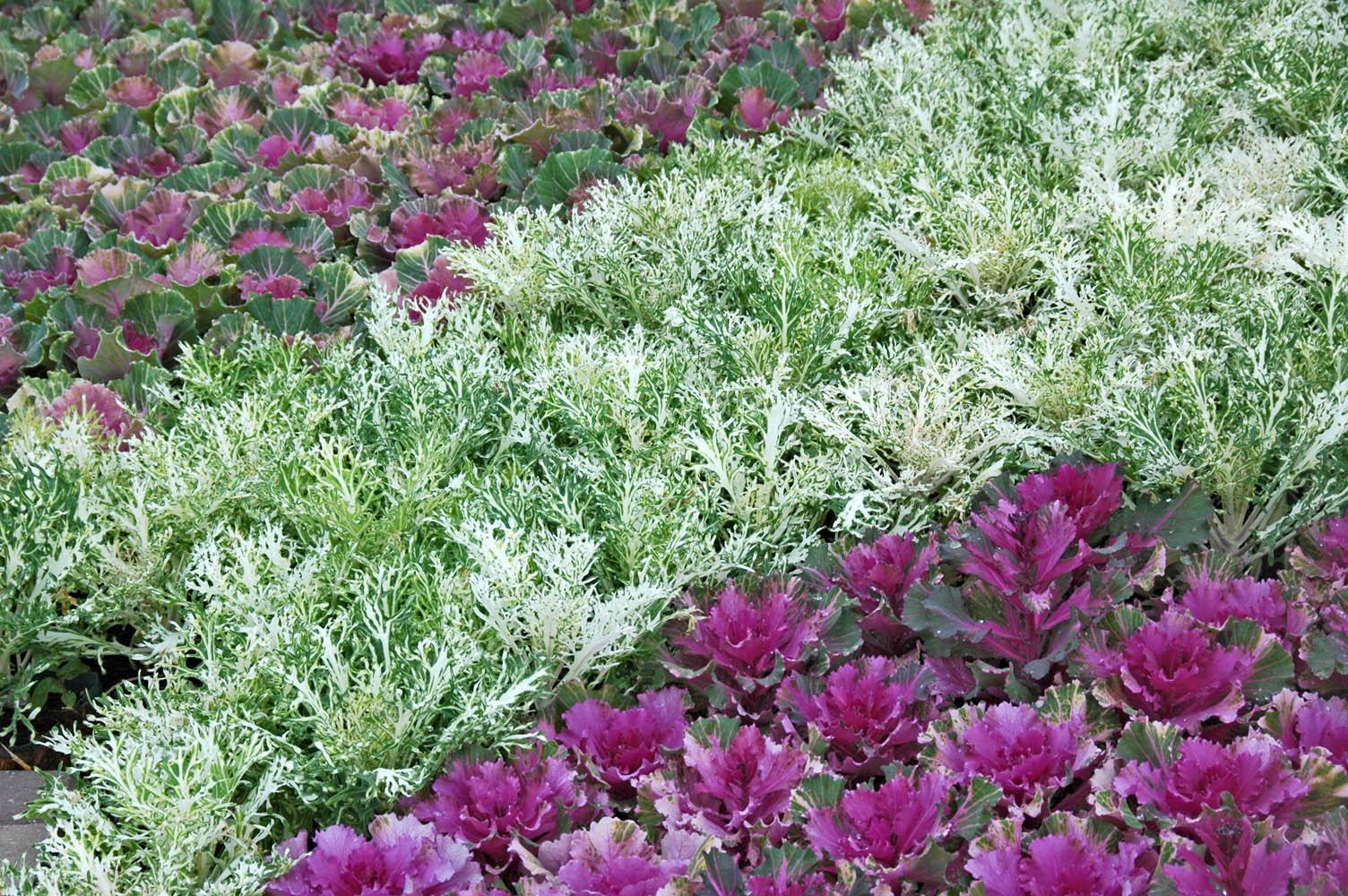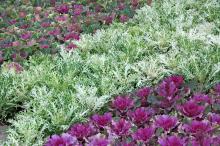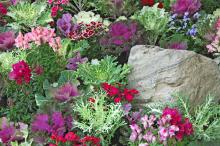Information Possibly Outdated
The information presented on this page was originally released on October 25, 2007. It may not be outdated, but please search our site for more current information. If you plan to quote or reference this information in a publication, please check with the Extension specialist or author before proceeding.
Expand winter selections by planting cabbage, kale
By Norman Winter
MSU Horticulturist
Central Mississippi Research & Extension Center
Flowering kale and cabbage are starting to show up in garden centers everywhere along with the other cool-season flowers. There still seems to be a little perceived mystery about using these plants for their colorful foliage in the landscape.
Your first question might be, “How cold tolerant are they?” The Chicago Botanic Garden has seen them survive minus 10 degrees.
How to use them in combinations is probably the other dilemma many gardeners face. Last spring I had the opportunity to see a planting that stretched my comfort zone. I had never considered these combinations. The planting defied everything any horticulturist or landscape designer was ever taught. It still was extraordinarily beautiful. Provided the soil is prepared correctly, anyone could succeed.
The planting was done by American Takii Seed Co., one of the largest suppliers of flowering kale and cabbage in the world. You may have used their varieties like Chidori, Peacock, Kamome and Pigeon. Cut-flower growers seek after their Sunrise, Sunset and Crane varieties.
But in this situation, American Takii challenged us by planting a mixed bed of the landscape varieties along with snapdragons, dianthus and pansies. You are probably wondering what is so special about a mix? The mix was so informal there was no apparent rhyme or reason.
The bed was full of color. One kale was planted, and then 18 inches away was another of a different selection. In between there was a dianthus, snapdragon or pansy. It was random and dazzling. You could do the same quite easily.
Prepare soil by incorporating 3 to 4 inches of organic matter and 2 pounds of a slow-release, 12-6-6 fertilizer per 100-square feet of bed space.
Set the transplant to a depth just slightly below the bottom set of leaves. The plants will reach 6 to 12 inches in height, and you will want to space them 12 to 18 inches apart.
Be sure to add a good layer of mulch after planting to help stabilize soil temperatures and conserve moisture. Flowering kale and cabbage usually come through the winter unscathed. If record cold is forecasted, cover these plants completely with pine straw until the weather warms.
Kale and cabbage need good drainage, but must be kept moist and fed to keep growing vigorously. Pay especially close attention as dry, cold fronts have a tendency to really deplete the available moisture.
Feed with light applications of the pre-plant fertilizer every four to six weeks. University of Florida research has shown that as the temperature gets colder, water-soluble fertilizers are superior to granular formulations as the nutrients are more readily available to the plants. The colors will intensify as the temperatures drop.
Whether or not you like the random-planting idea, there are certainly other options to consider. Try planting bold drifts of one color adjacent to a drift of another or a drift of pansies. Use in front of taller snapdragons or dianthus, and by all means try some in containers.
Now is the time to plant.








